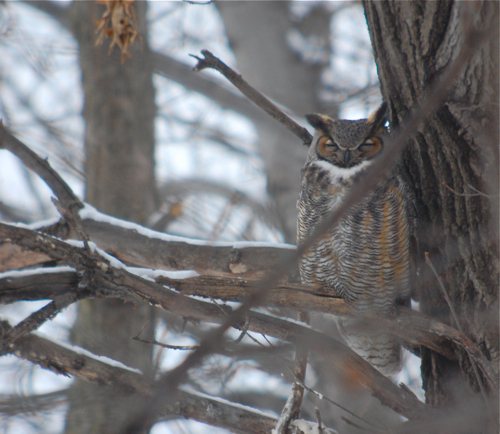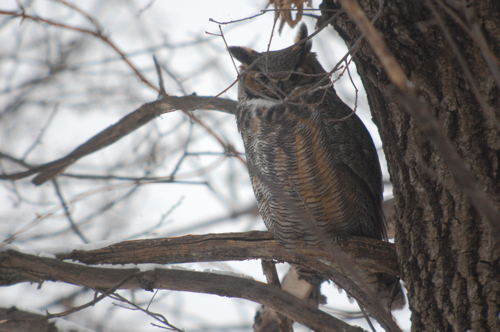 I mentioned earlier that there's a great horned owl pair nesting near my apartment in the Uptown area of Minneapolis. I love that we have such a large bird that is able to hide really well in such an urban area. Also, the distance that this owl is from my home, makes for a nice walk and a good incentive to get out and keep exercising in freezing weather so my biking muscles don't completely atrophy. I digiscoped this photo from the first day I saw the pair nesting, I don't always take my scope and camera. One, walking through urban neighborhoods with that equipment makes home owners uneasy and can lead to police calls. Two, I don't want to aim my scope every day at the owls and the nest to draw further attention and make them uneasy.
I mentioned earlier that there's a great horned owl pair nesting near my apartment in the Uptown area of Minneapolis. I love that we have such a large bird that is able to hide really well in such an urban area. Also, the distance that this owl is from my home, makes for a nice walk and a good incentive to get out and keep exercising in freezing weather so my biking muscles don't completely atrophy. I digiscoped this photo from the first day I saw the pair nesting, I don't always take my scope and camera. One, walking through urban neighborhoods with that equipment makes home owners uneasy and can lead to police calls. Two, I don't want to aim my scope every day at the owls and the nest to draw further attention and make them uneasy.

As I neared the area for the nest, I scanned the trees for the male. Some crows found him, they were cawing like crazy, but I didn't see him. When the crows saw me, the they took off. I got to point where I found an area in the snow covered in owl poop and pellets (I took the above photo with my phone since I didn't have my camera). Owls (like many predatory birds) cannot digest everything they eat and will regurgitate a pellet of fur and bones of what they couldn't digest from their prey. Owl pellets are fun to dissect because the bones give clues to what they've been eating. You generally do not find bones in hawk pellets because they tend to rip meat off of bones rather than swallow it whole and they have stronger digestive acids and the bones can break down.
Like Indiana Jones at an artifact, I carefully dislodged the large pellets from the snow. It suddenly occurred to me that where you see owl pellets and poop, the owl is generally overhead--at least, that's what I often tell people and have only found that to be true a couple of times. I looked up and was so mad I didn't have my camera. There was the male, directly over my head, about 20 feet up. He stared down at me and was totally giving me the hairy eyeball...or would that be the feathery eyeball in a bird's case? I quickly gathered the pellets and went on my way. The owl never moved and is clearly accustomed to human activity.

Here are the pellets that I picked up. I set a lime beside them to give an idea of size. Two pellets were very dark and one was light gray. I suspected right away that the pellet with the light gray fur was from a gray squirrel, since most of the mammal tracks in the snow around the nest are squirrel...and the female owl appears to be using an old squirrel nest for her nest.

The bones in these pellets are considerably larger than what you find from a pellet that you purchase. Those are usually from zoos and wildlife rehab centers where the birds pretty much eat mice all day. This particular prey item was so large that the great horned owl couldn't swallow it hole and broke apart bones. I think that's a rib bone up there and compared to the lime, that's a good size animal.

There were several pieces of vertebrae in the darker pellets. I circled it in the above photo. I puzzled over how to tell a rabbit spine from a squirrel spine. I tried to crowd source that information on Twitter and got the following gems from the following Twitter users:
@ADruglis suggested: "Use a mass spectrometer to measure the ratio of calcium to disapproval in the bone."
Nice Disapproving Rabbits ref!
@ODN_Editor offered: "Any Easter egg shells mixed in? That's a dead giveaway."
Thanks.
@UppieSand said: "easy. Squirrels actually have them. Jk ;)"
Since Twitter was proving humorous rather than helpful, I went back to study the pellets. I determined already that the lighter gray pellet was gray squirrel, I took to examining the fur of the dark pellet.

The fur was multicolored, dark, then brownish, then dark. That was familiar...where have I seen that fur before? Then it hit me: eastern cottontail. I puzzled for a moment that it might be gray squirrel, the tail can have that color, but a raptor isn't really interested in eating squirrel tail. It's mostly fur and bone--very little meat, why bother?
What was most interesting to me about all three pellets was that there were no small mammal remains in there, no mice, no voles, it was all big stuff. I'll be curious to see if we can find other prey items in future pellets. In the meantime, Uptown rabbits and squirrels, beware.
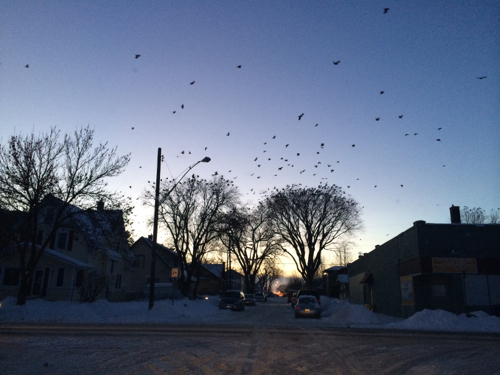


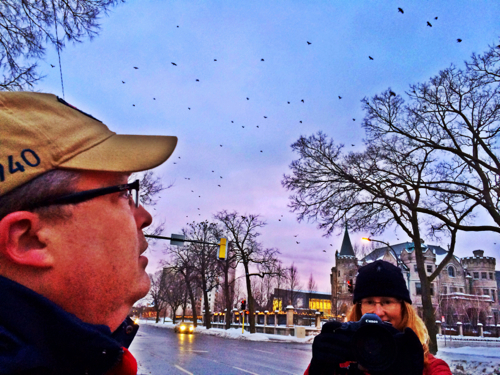
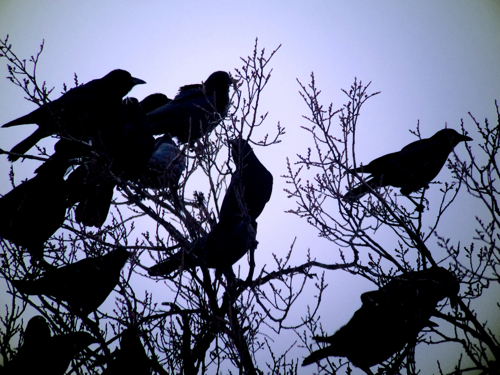
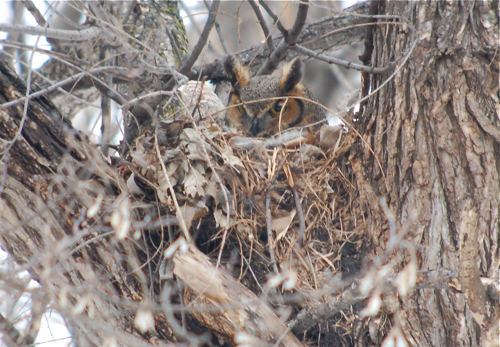
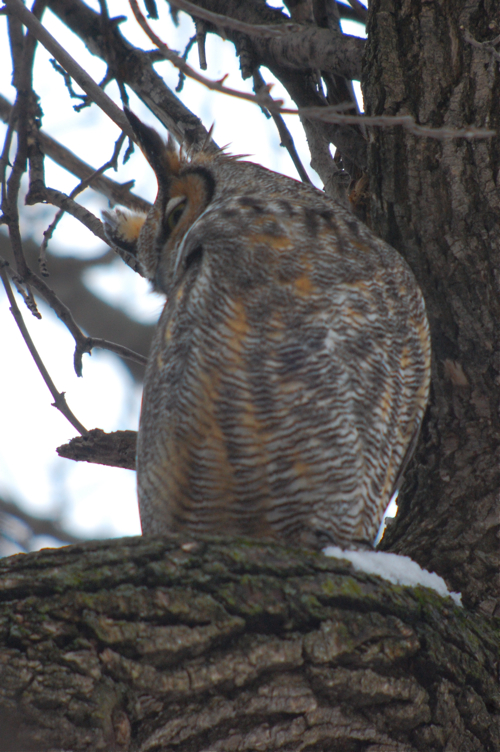
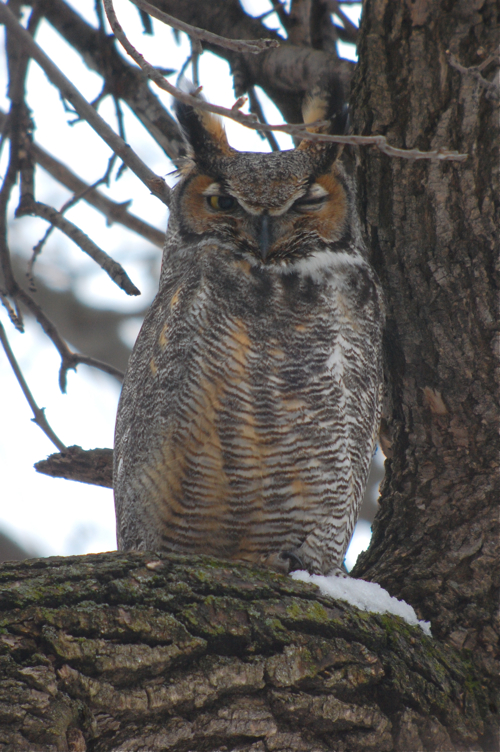
 I mentioned earlier that there's
I mentioned earlier that there's 





